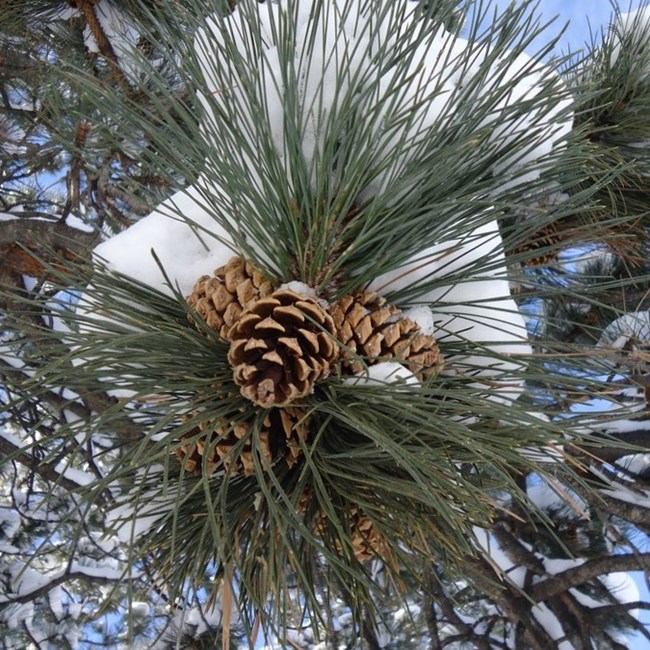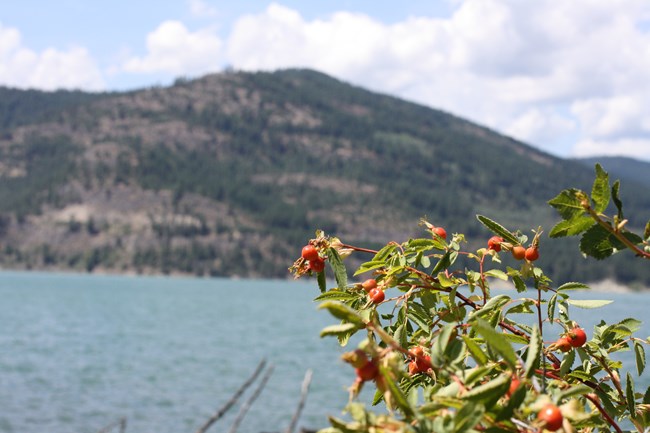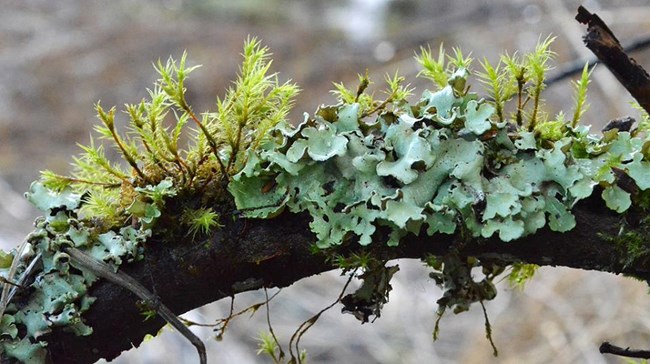
NPS Photo Okanogan HighlandsLake Roosevelt is a transition zone geologically as well as ecosystem wise. While the southern half of the park was flooded by the Ice Age Floods, the northern half was buried under hundreds of feet of glacial ice. These geologic differences can be seen today in the diversity found within 120+ miles of the park.While our south district is part of the Columbia Plateau, the Okanogan highlands are an extension of the Rocky Mountains. Distinct from its southern half of the Channeled Scablands, the Okanogan highlands are a more wet, more mountainous climate. Here we find a type of Montane ecosystem, characterized by large open conifer forests and elevation typically less than 3,000ft. The best place to experience this habitat is by visiting Kettle Falls, or the Mission Trail. Climate

NPS Photo EcosystemPonderosa pines dominate this landscape, towering over one hundred feet above, with reddish bark marked with deep fissures. Young pines can be hard to tell part, but after years they develop thick bark and deep roots, increasing fire resistance. Douglas-firs, western larch, and cottonwoods can also be found alongside ponderosas. Rose bushes and shrubs such as serviceberries can be found throughout the understory.Fire is an important cycle in this habitat, as most natural fire clears the underbrush without killing mature healthy trees. Adult trees will drop the lowest branches, saving the ever-green needles from the highest reaching flames. As needles and lower branches begin to cover the floor once again, it becomes fuel for the next fire. Many trees will have chemicals in their needles to discourage growth of other plants as a way to keep open ground for their own offspring. Wildfire policies of early forest management focused on suppression of all fires, leading to less frequent but more intense wildfires. Modern management has begun to restore the natural, frequent, but low intensity fires the forest needs. 
NPS Photo AnimalsMoose prefer humid forested habitat, but they have been documented throughout the park. As the largest members of the deer family, they can reach 1,100 pounds and 6 feet high at the shoulder. Due to their large size, they prefer cold snowy ranges and are most concentrated in north eastern parts of Washington. These solitary giants feed on twigs, bark, leaves, aquatic vegetation and new plant growth. This makes them a pioneer species meaning they are often one of the first to return to an area that's been burned. 
NPS Photo/ J. Peaco Open understory forests give way for the other large mammals of the area; deer, elk, bear, and mountain lions. White tailed deer are more common in the north, while mule deer prefer the open grasslands of the south. The mammal most common in the area is the red squirrel, its chirping can often be mistaken as a bird. Seemingly always on the move, these squirrels are gathering pine cones, seeds, fruits, for winter months. Songbirds can be heard all year round in the highlands, fluttering from the high branches of the ponderosa, such as the evening grosbeak or a western tanager. Many of the birds you see are migratory, and will leave to different areas come winter. Rather than migrating, black capped chickadees are joined by pygmy nuthatches and black billed magpies who stay together in multi-species clusters. To continue to be able to view this amazing and complex habitat, it is important to recognize it as all of our homes. By following Leave No Trace guidelines and park rules one can enjoy and not destroy. 

Left image
Right image
|
Last updated: July 28, 2024
